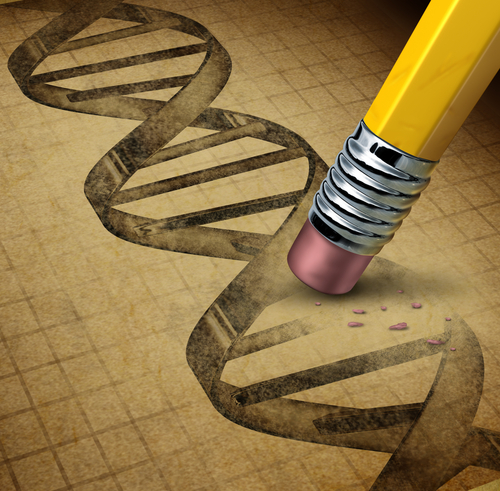New CRISPR-Cas9 Technique Corrects Defects Linked to Huntington’s, UCSD Study Suggests
Written by |

A new version of the CRISPR-Cas9 gene editing technique designed to target RNA molecules can fix the underlying cause of Huntington’s disease and similar disorders, say researchers at the University of California San Diego.
Their study, “Elimination of Toxic Microsatellite Repeat Expansion RNA by RNA-Targeting Cas9,” appeared in the journal Cell.
Many diseases arise due to genetic mutations that lead to mutated proteins. The concept behind gene editing is that if scientists can replace the mutated copy of a gene with a functioning copy, they can cure the disease itself.
CRISPR-Cas9 is an innovative technique designed to edit genes. The process introduces breaks in the DNA of the gene of interest, which would disable the incorrect gene. CRISPR-Cas9 can also be used to replace an incorrect gene with the correct version.
In 2016, UCSD researchers published a variation of the technique, in which they used CRISPR-Cas9 to target RNAs instead of DNA molecules. While DNA contains information which codes for a certain protein, RNA is the molecule that carries information from DNA to the machinery that produces the protein.
Huntington’s disease is an example of one of the many disorders caused by incorrect repeats present in RNA molecules. These errant repeats cause RNA molecules to aggregate together in cells and form dense knots called foci, which are toxic.
CRISPR-Cas9 works by targeting aberrant DNA, but Yeo’s team was able to change the system to target aberrant RNA instead. Through the use of patient-derived cells and cell models of microsatellite repeat expansion diseases such as myotonic dystrophy type 1 and type 2, one type of ALS and Huntington’s disease, researchers evaluated the efficacy of the new system, called RCas9.
Results showed that Cas9 eliminate 95 percent or more of the RNA foci linked to the diseases. RCas9 also eliminated 95 percent of the RNAs that contained aberrant repeats in cells obtained from patients with myotonic dystrophy. In addition, RCas9 restored the proper functioning of proteins involved in myotonic dystrophy to the point where unhealthy cells started to resemble healthy ones.
“We are really excited about this work because we not only defined a new potential therapeutic mechanism for CRISPR-Cas9, we demonstrated how it could be used to treat an entire class of conditions for which there are no successful treatment options,” Dr. David Nelles, co-first author of the study with Ranjan Batra, said in a press release.
“There are more than 20 genetic diseases caused by microsatellite expansions in different places in the genome,” added Batra. “Our ability to program the RCas9 system to target different repeats, combined with low risk of off-target effects, is its major strength.”
While this approach looks promising, scientists must still overcome many hurdles before applying it in a clinical setting — including how to deliver the RCas9 system into human bodies. One methods involves using viral vectors, but their efficacy and safety in humans is unclear.
“The main thing we don’t know yet is whether or not the viral vectors that deliver RCas9 to cells would elicit an immune response,” said Dr. Gene Yeo, professor of cellular and molecular medicine at UC San Diego School of Medicine. “Before this could be tested in humans, we would need to test it in animal models, determine potential toxicities and evaluate long-term exposure.”





